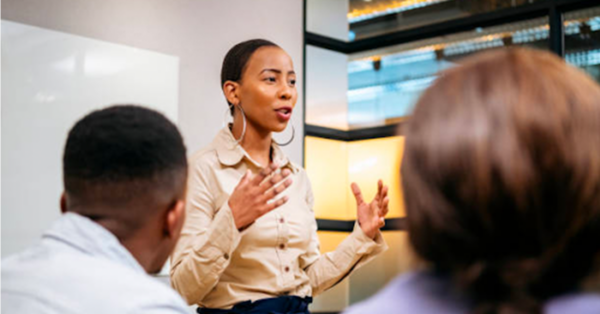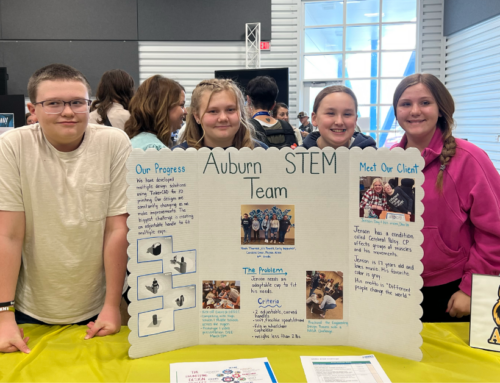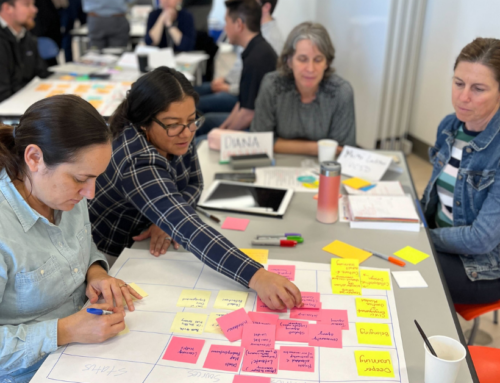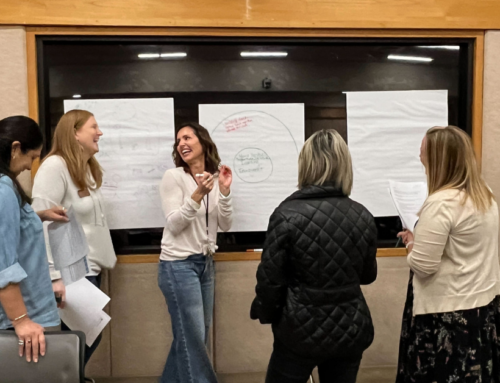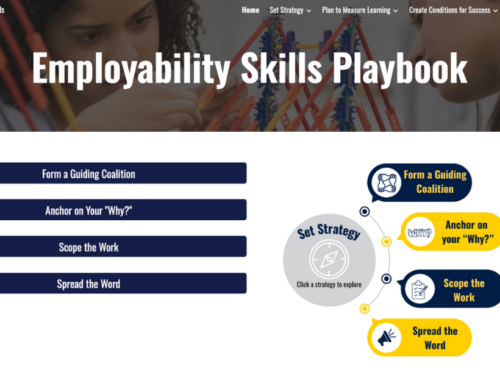In a school-centered system, we design around standards and instruction, not learners and learning. In that mode, we buy programs and resources first and design everything to fit them. Instead, if we are learner-centered, we start with the learners and the learning that is most valuable and design from there. Understanding those you serve and providing opportunities for them to better understand themselves and others is central to creating learner-centered environments.
Anyone can have a vision, and most schools do. Many websites and mission statements describe lifelong learners and creative 21st-century thinkers—but if you don’t challenge the status quo and move beyond what has always been done, you likely won’t achieve these aspirations.
Here are four examples of learner-centered leaders whose actions inspire others to think big, take risks, learn from challenges, and share their learning process as they iterate, grow and, ultimately, make impactful changes.
Lead by Listening
Dr. Bettina Love says, “You have to be at the table to design the system to work for you.” With this mindset at the forefront, Superintendent of Middletown City Schools, Marlon Styles, helped design the Students for Equitable Education Summit (SEE Summit) to elevate and learn from students. He has encouraged us all to take Dr. Love’s message to heart and listen to the students to better design for, and ideally with, them to create the best path forward for an equitable, purposeful, and authentic education.
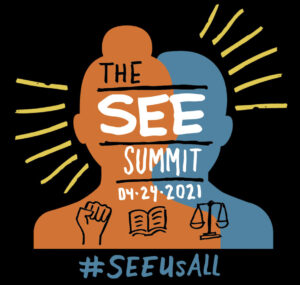 At the SEE Summit, we had the privilege to learn from the stories, perspectives, and passion of students in schools around the United States. They were articulate, inquisitive, and strong communicators. This is a testament to the work that educators have done and continue to do throughout the pandemic, and yet their stories illuminated the hardships, inequity, and what is possible when we create opportunities not only for students to survive but to thrive.
At the SEE Summit, we had the privilege to learn from the stories, perspectives, and passion of students in schools around the United States. They were articulate, inquisitive, and strong communicators. This is a testament to the work that educators have done and continue to do throughout the pandemic, and yet their stories illuminated the hardships, inequity, and what is possible when we create opportunities not only for students to survive but to thrive.
The path that is ahead of us becomes so much clearer when we listen to students to understand what they experience and see if the intention of our actions actually makes the impact we desire. I am grateful for leaders like Marlon who create the space to listen to others, especially our students, to understand what is working, what is challenging, and ultimately what is possible.
Listening to learners is front and center in Devin Vodicka’s 3 Strategies to Transform Your School District Now.
Lead by Learning
One of the most authentic leaders that I have been able to work with is Tom Rooney from Lindsay Unified. He has been in the district for almost 15 years and superintendent for 10 years and continues to lead by learning. I had the privilege of experiencing his authentic leadership as I worked with 25 leaders from Lindsay Unified for 5 months to facilitate a Learner-Centered Leadership Academy. With a lens on learner-centered practices, the goal was to understand the needs in their current landscape and context to create solutions to best meet the needs of learners. Along with his team of senior district and school leaders, Tom modeled his vulnerability in sharing both strengths and areas for growth. He engaged by identifying a problem of practice, seeking feedback from key stakeholders, and identifying the next steps to achieve lifelong learning aspirations in Lindsay Unified. Because of his leadership, each of his team members was more open and courageous in their aspirations. The team is committed to learning and growing together and we have all benefited in the field of education from their model as they continue to strive to create the best opportunities for their students and community.
Download these principles and prompts designed to support leaders in cultivating learner-centered ecosystems.
Lead with a shared vision
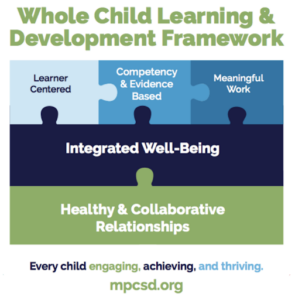 I have had the opportunity to work with many school and district leaders to create their Graduate Profile or Learner Profile. I have witnessed how powerful these are to align on a vision, and also learned that alone they are not enough. As I have had the opportunity to work with Erik Burmeister, Superintendent of Menlo Park City School District, and his amazing team, I have seen the impact of the Whole Child Learning and Development Framework that explicitly defines practices that are crucial to achieving their vision for all learners.
I have had the opportunity to work with many school and district leaders to create their Graduate Profile or Learner Profile. I have witnessed how powerful these are to align on a vision, and also learned that alone they are not enough. As I have had the opportunity to work with Erik Burmeister, Superintendent of Menlo Park City School District, and his amazing team, I have seen the impact of the Whole Child Learning and Development Framework that explicitly defines practices that are crucial to achieving their vision for all learners.
As shared on the Menlo Park City School District website:
The MPCSD School Board and Leadership Team have developed a Whole Child Learning & Development Framework that outlines the five strategic elements that reflect the priorities upon which the district focuses its time, energy, and resources. The design of the Framework reinforces our district’s belief that healthy and collaborative relationships and integrated well-being are foundational to the success of our more academic and cognitive efforts: Learner-centered, competency evidence-based, and meaningful work. The success of the framework will be measured by asking how well every child is engaging, achieving, and thriving.
With clear success indicators, the district, schools, and individual educators can set goals, create learning plans, track progress on what matters, and collectively work productively to improve. The Framework ensures the key practices drive school priorities, professional learning, and how success is measured across the district. When all resources, developments, and conversations are grounded in the same goals and language, I have seen how quickly teams can move to create the impact they desire.
Learn more about working with our team to bring to life your vision for learning and graduate profile. Schedule time to connect!
Lead by action and advocacy
Dr. Susan Enfield was recently named the Washington Superintendent of the year and is committed to the Highline Promise that guides everything they do:
“Every student is known by name, strength, and need, and graduates prepared for the future they choose.”
As Dr. Enfield shared in a recent panel, Leading Districts Toward a Learner-Centered Future, Highline Public Schools saw that some students were thriving in virtual learning while others really benefited from in-person learning. Doubling down on their promise to provide all students with opportunities to get what they need, Highline Public Schools expanded their offerings and created a virtual academy for grades 6-12. The model has been so successful for those it serves they are expanding to add options for elementary families who are better served in a virtual model. I appreciate how she acknowledges that distance learning has significant limitations when it is used as a mere substitute for in-person, and at the same time recognized the opportunity to envision a bold, student-driven, virtual instructional model that meets the needs of a population of learners who aren’t optimally served by in-person learning.
Students, educators, families, and our world require new and different models and I am grateful for leaders like Susan who not only advocate for change but lead by creating models of what is possible.
Moving Forward
In education, when we challenge the status quo it means we open the door to new ways we can meet the needs of our students, families, and learning communities despite the norms and the ways things have always been done. Increasingly, educators are rejecting the fact that students need to be sorted, ranked, and managed and are challenging long-held assumptions about intelligence, curriculum, and ultimately learning.
We need leaders who can co-design, listen, learn, and advocate to create the future of education. The time is now.

